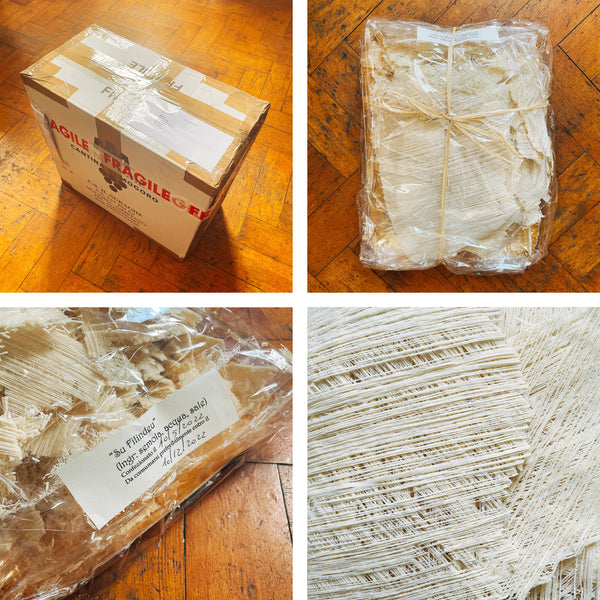What Is Su Filindeu Pasta?

For over 300 years, only a handful of women from the remote Sardinian town of Nuoro have known the secret to make an unfathomably intricate pasta known colloquially as su filindeu. That makes it the rarest and most expensive pasta on earth.
Su Filindeu Pasta is the Stuff of Legends
Su filindeu translates as the "threads of God" in the local dialect and is traditionally eaten twice a year, on May 1 and October 4. To celebrate the Feast of San Francesco, pilgrims trek 20 miles on foot and horseback under the cover of darkness to the isolated village of Lula. On arrival, they are welcomed with a piping hot bowl of su filindeu served in a deeply savoury mutton broth and garnished with slightly acidic, fresh pecorino cheese.

The Magic of Su Filindeu Making
In the autumn of 2023, we managed to track down a chef willing to teach us the secrets to making su filindeu. A trip to Sardinia to eat this iconic dish had been at the top of our food bucket list for years, although in the meantime we had developed our own su filindeu in mutton broth recipe with considerable success. (We've also experimented with serving it in a chicken consommé and were rather pleased with the results.)

The Price of Su Filindeu
Being the world's rarest pasta shape goes some way to explaining su filindeu's eye-watering price tag. You will struggle to find it for sale online for less than £60/kg, making it more expensive than lobster.
How to Make Su Filindeu Pasta
Despite being the world's rarest pasta, the ingredients and production methods are no great secret. The modest women who still make su filindeu insist that the only secret is in their hands and fingers. The magic is knowing exactly when the gluten in the dough has reached the perfect amount of elasticity for it to be pulled and stretched repeatedly without breaking.
The dough is made from nothing more than semolina flour, water, and a pinch of salt. There are always two bowls within easy reach, one containing plain water and the other containing heavily salted water. The pasta maker will occasionally dip her fingers in one of the bowls and touch the dough to tweak its consistency. Which bowl to use, how much water to take, and when to do it are not things that can be taught; they must be sensed. It is, quite simply, intuitive cooking in its purest form.
Once the dough has been kneaded to the perfect elasticity, it is rolled into a rope. It is then stretched, looped, and reconnected to create two strands. Those strands are then stretched using the same technique, looped, and reconnected to create four strands. This is repeated another six times until there are 256 insanely thin but perfectly even strands.
The strands are layered in three different directions on a circular tray called a fundu, which is traditionally woven from the leaves of the local asphodel plant. Once dried in the Sardinian sun, the pasta is transformed into a translucent, lattice-type structure that resembles silk threads more than it does pasta. It is so thin and fragile that it shatters easily and takes only a few seconds to cook.

The Future of Su Filindeu
In 2005, the world's biggest pasta company, Barilla, sent a team of engineers to Sardinia to learn the secrets to bring out a machine-made, mass-produced version. They failed.
Not Even Jamie Oliver Can Make This Unique Style of Pasta
Jamie Oliver, the classically trained celebrity chef who once owned over forty Italian restaurants and learnt Italian cooking from Antonio Carluccio, had to admit defeat when he visited Paola Abraini, one of only a few women who has perfected the craft.
The younger generation of girls and women in the town has little interest in learning a laborious technique that can take years to perfect. Because of its rarity, su filindeu is included in the Ark of Taste, a list collated by Slow Food International to counteract the disappearance of local foods and culture.
Thankfully, the process has been documented many times, most famously by the Italian food and drink publisher Gambero Rosso. They wanted to record it because there was a very real risk that this style of pasta could become extinct.
The Great Big Story podcast filmed this beautiful vignette, showing Paola Abraini making the production of su filindeu look remarkably easy.
